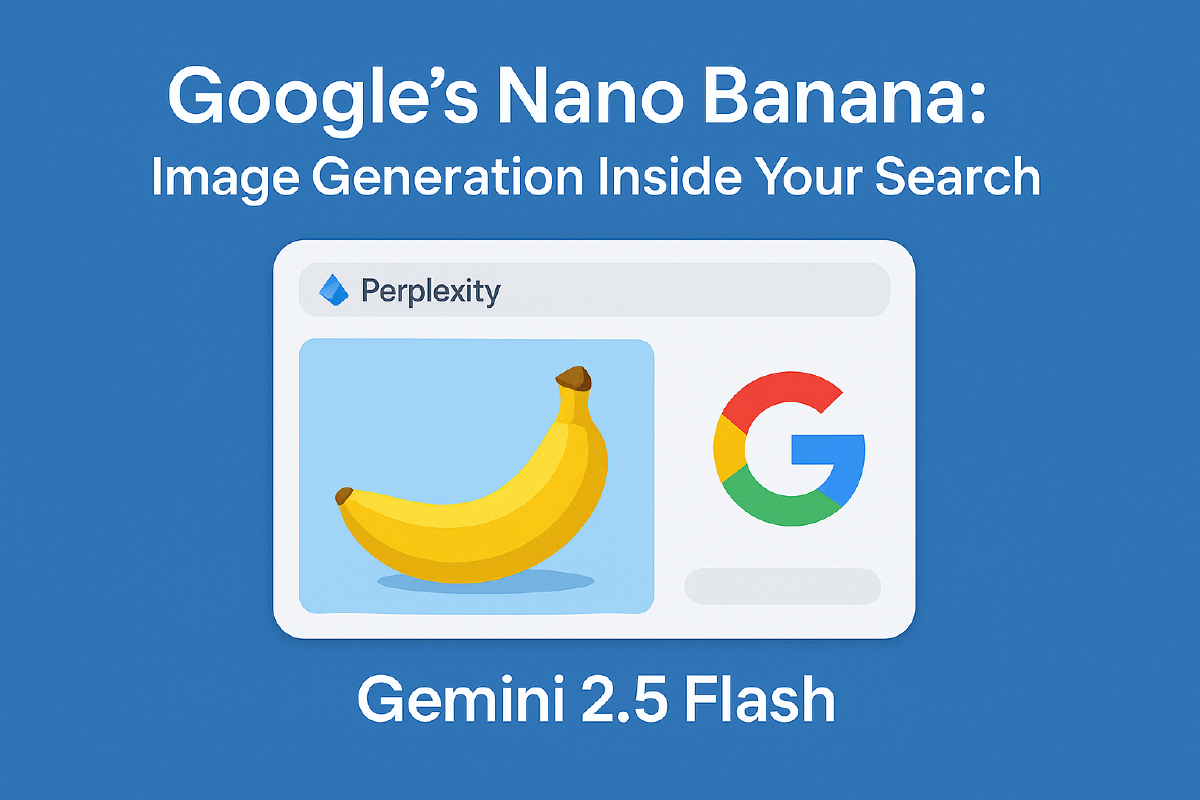Google quietly slipped its latest image generation model into Perplexity’s search platform. The codename? Nano Banana. The official name? Gemini 2.5 Flash. The impact? You can now generate images without interrupting your search flow.
What’s Different#
Most AI image generators live in their own apps. You think of something, switch tabs, type your prompt, wait, download, switch back. Nano Banana eliminates that dance. You’re searching for something, need a visual, and boom - it appears right there in your results.
Perplexity Pro and Max subscribers can enable it through Settings → Preferences (web) or Settings → Image generation model (iOS). Once activated, image creation becomes part of the search experience, not a separate task.
Why It Matters#
The integration is the innovation here. Google has image models. Perplexity has search. Together, they’ve created something more useful than either alone:
- Context-aware generation - Images informed by your search query
- No context switching - Stay in your workflow
- Edit and iterate - Refine images without starting over
- High-quality output - Built on Google’s Gemini infrastructure
This isn’t about having the most powerful image generator. It’s about having one exactly where you need it.
The Strategic Play#
For Google, this is distribution. Gemini models gain visibility and usage without Google building another interface. For Perplexity, it’s differentiation. Search competitors can find information, but Perplexity can help you visualize it.
For users, it’s convenience. The best tool isn’t always the most powerful one - it’s the one that fits your workflow without friction.
What to Watch#
- Quality vs. speed - Flash models prioritize speed. How does image quality compare to dedicated tools like Midjourney or DALL-E?
- Pricing pressure - Perplexity absorbs generation costs. Do prices adjust as usage scales?
- Feature parity - Will Nano Banana match standalone tools’ advanced features, or stay deliberately simpler?
Who Benefits Most#
- Researchers creating quick visualizations for concepts
- Content creators generating reference images mid-workflow
- Designers exploring ideas before switching to pro tools
- Anyone who values integrated tools over juggling apps
The Bigger Picture#
This follows a pattern: AI capabilities moving from standalone apps into platforms where you already work. Code completion in IDEs. Writing assistance in docs. Now image generation in search.
The next wave of AI won’t announce itself with flashy new apps. It’ll just be there when you need it, embedded in what you’re already doing.
Bottom line: Nano Banana isn’t the most powerful image generator. It’s the most convenient one for Perplexity users. Sometimes that’s what matters.


